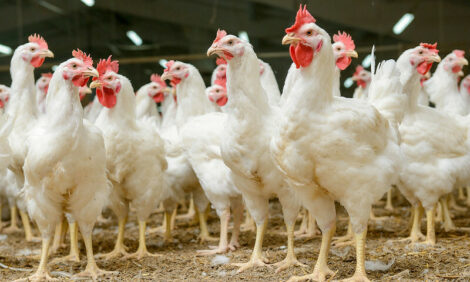



Egg Production is Environmentally Sound, Says AECL
AUSTRALIA - The Australian egg industry is environmentally efficient with regards to low levels of greenhouse gas emissions, energy and water use, according to a study carried out for the Australian Egg Corporation Limited (AECL).In order to quantify the most important environmental and resource impacts faced by the industry, a life cycle assessment (LCA) study was commissioned to investigate emissions of greenhouse gases, energy and water use. This study investigated both caged and free range egg production through to the end of the primary production supply chain, using a functional unit of one kilogram of eggs produced.
This project demonstrates the efficiency of Australian egg production with respect to three important environmental and resource efficiency issues: global warming, water use and energy use.
Climate change
Australian egg production was found to generate low levels of greenhouse gas (GHG) when compared with egg production from European studies.
Total GHG was 1.3 +/- 0.2 kg CO2-e / kg eggs from caged production and 1.6 +/- 0.3 kg CO2-e / kg for free range production. Despite the overlapping confidence intervals, free range production generated higher emissions than caged production when shared variability was taken into account.
Energy
Cumulative energy demand (CED) for caged production (0.7 +/- 0.9 MJ / kg eggs) was lower than studies previously reported in the literature. Cumulative energy demand for free range egg production (13.1 +/- 1.1 MJ / kg eggs) was slightly higher than for caged production, but was similar to other studies reported in the literature.
The relative environmental efficiency of egg production in this study arose from the high performance of modern Australian egg production coupled with the low input nature of Australian grain production.
Water usuage
The study identified green water as the major contributor (95-96 per cent) to the total water footprint (WF) for Australian eggs.
Considering this, the WF for eggs is clearly not a good measure of the egg industries‟ impact on competitive water uses in Australia, or of the environmental impacts of water use.
The contribution analysis showed that feed grain production and use was the largest impact source, followed by on-farm water and energy use, and manure management (for GHG only).
Consequently, mitigation strategies and efficiency measures that reduce feed use would be highly beneficial to the industry.
Reducing farm electricity use is another attractive mitigation strategy for the industry that will lead to lower energy use, lower GHG and lower costs, provided production levels can be maintained.
Further Reading
| - | You can view the full report by clicking here. |








